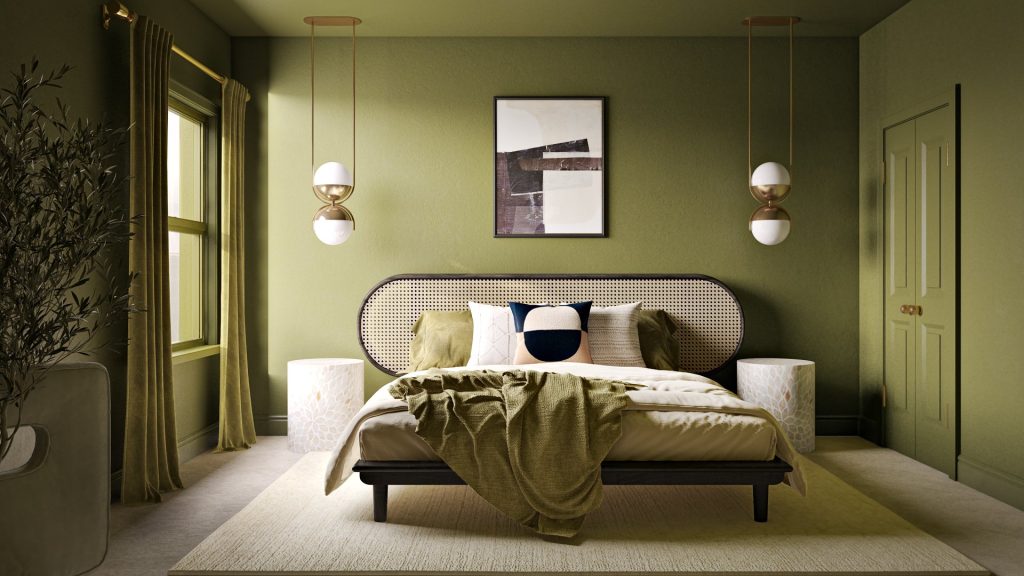The world of interior design is full of options, and one decision that homeowners often grapple with is whether to paint their walls, ceiling, and trim the same color. This design approach can create a unique and cohesive look for a room. In this article, we will delve into the concept of painting walls, ceiling, and trim the same color, exploring its benefits, considerations, and tips for achieving a harmonious and stylish space.

Benefits of a Monochromatic Palette
Creating a monochromatic palette by using the same color for your walls, ceiling, and trim has several advantages that can transform your living spaces.
1. Space Perception
Using the same color on walls, ceiling, and trim can blur the visual boundaries within a room, making it feel more open and spacious. This design choice creates a seamless transition, which can be particularly effective in smaller rooms or spaces with low ceilings.
2. Elegance and Simplicity
A monochromatic palette exudes elegance and simplicity. It provides a clean and cohesive look, eliminating the need to coordinate multiple colors. This approach can be especially appealing if you prefer a minimalist or contemporary design aesthetic.
3. Focal Point Emphasis
When you paint walls, ceiling, and trim the same color, it can put the focus on other design elements in the room, such as artwork, furniture, or architectural features. This can create a harmonious backdrop that allows your decor to shine.
Considerations Before You Paint Everything the Same Color
While the idea of a monochromatic palette is intriguing, there are some important considerations to keep in mind:
1. Lighting
The lighting in your space can significantly affect how the color appears. Natural light, artificial light, and the direction the room faces all play a role. It’s essential to test your chosen color in various lighting conditions to ensure it maintains the desired effect.
2. Room Size
In larger rooms, a single color can create a sense of unity and warmth. In smaller rooms, it can make the space feel cozier. Consider the size of the room and how you want it to feel when choosing your color.
3. Color Undertones
Different paint colors have undertones that may become more or less noticeable when applied to a larger surface. Undertones can shift the overall appearance of the color. Be sure to evaluate how the undertones of your chosen color work in your space.
Tips for Achieving Success
To make the most of a monochromatic design approach, here are some essential tips:
1. Choose the Right Color
Selecting the right color is crucial. Consider the existing decor, your personal style, and the mood you want to create in the room. Warm, neutral tones like soft grays, beiges, and muted blues often work well for this design concept.
2. Use Different Finishes
Varying the paint finish can add depth and dimension to your monochromatic design. For example, you might use a matte finish on the walls, a satin finish on the trim, and a high-gloss finish on the ceiling. This contrast can make the color more visually interesting.
3. Add Texture
To avoid a flat or dull appearance, incorporate texture into your design. Textured wallpapers, patterned fabrics, or textural elements like wainscoting or beadboard can break up the monotony of a single color.
4. Accent with Decor
Introduce color through decor and accessories. Pillows, artwork, and furnishings in complementary or contrasting colors can inject vibrancy and personality into the space.
Read too: How Much To Paint Ceiling And Walls
Conclusion
Painting your walls, ceiling, and trim the same color is a design choice that can yield impressive results when executed thoughtfully. It offers a sense of unity, elegance, and simplicity to your living spaces. However, it’s essential to carefully consider factors like lighting, room size, and color undertones before taking the plunge. By following the tips and guidelines mentioned, you can create a visually appealing and harmonious interior that reflects your personal style and enhances the overall ambiance of your home.